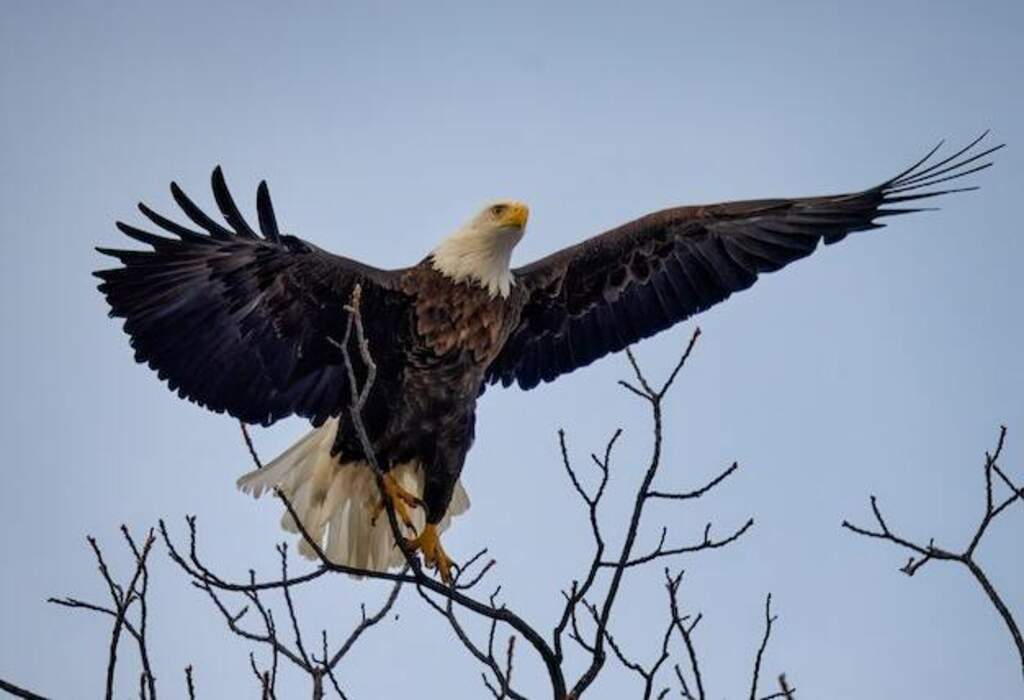“Can An Eagle Pick Up A Goat?” Hold on to your hats, folks, because we’re taking flight on an extraordinary adventure into the realm of avian feats! Short answer:
While the image of an eagle swooping down to carry off a goat might seem like a tall tale, we’ve got surprising truths, incredible stories, and a riveting exploration of the science behind this soaring mystery.
Get ready to be amazed as we debunk myths and unveil the wonders of the wild!
Table of Contents
- 1 Key Takeaways
- 2 Can An Eagle Pick Up A Goat
- 3 The Anatomy and Capabilities of Eagles
- 4 The Hunting Techniques of Eagles
- 5 Size Comparison: Eagle vs. Goat
- 6 Lift Capacity of Eagles
- 7 Case Studies: Real-life Examples of Eagle Predation
- 8 Environmental Factors: How Terrain and Weather Affect Eagle Hunting
- 9 Goat Behavior and Defense Mechanisms
- 10 Unlikely Scenarios: When an Eagle Might Attempt to Pick Up a Goat
- 11 Expert Opinions: What Biologists and Wildlife Experts Say
- 12 Conclusion: Can an Eagle Actually Pick Up a Goat?
- 13 Frequently Asked Questions
- 13.1 How much weight can an eagle lift?
- 13.2 Can an eagle pick up other animals besides goats?
- 13.3 Are there any recorded instances of eagles successfully picking up goats?
- 13.4 Do eagles have any natural predators?
- 13.5 What are the risks and potential consequences for an eagle attempting to pick up a goat?
- 14 Author
Key Takeaways
- Eagles have evolved adaptations for powerful flight and precise movements, including a large wingspan, strong muscles, and lightweight bones.
- Eagles employ hunting strategies such as swooping down and diving from great heights, using their sharp talons and powerful beak to capture and subdue prey.
- Eagles have exceptional visual acuity and a keen sense of hearing, using their eyesight to spot potential prey from great distances.
- Based on scientific evidence and expert opinions, it is highly unlikely for an eagle to successfully lift a full-grown goat, as eagles primarily prey on smaller animals and goats possess a robust physique that makes them less vulnerable to predation by eagles.
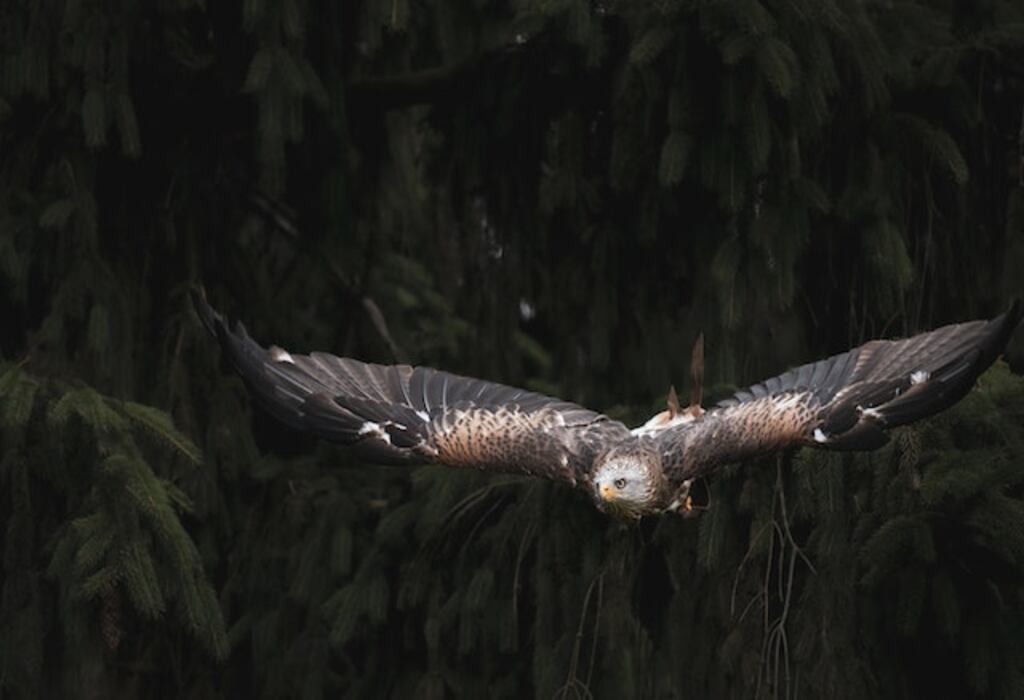
Can An Eagle Pick Up A Goat
No, eagles cannot pick up a full-grown goat. While eagles are powerful birds of prey, their lifting capacity is limited. Goats are much heavier than the typical prey they hunt. Eagles mainly target smaller animals, such as fish, birds, or small mammals, within their weight range.
The Anatomy and Capabilities of Eagles
The anatomy and capabilities of eagles allow them to possess the physical strength and agility required to potentially lift and carry objects as large as a goat.
Eagles have evolved specific adaptations that enable them to achieve powerful flight and precise movements in the air.
Their large wingspan, strong muscles, and lightweight bones contribute to their ability to soar effortlessly through the sky.
Eagle flight patterns involve soaring at high altitudes, scanning the ground for potential prey.
Once a target is identified, eagles employ various hunting strategies, such as swooping down from above or diving from great heights to catch their prey by surprise.
These techniques, combined with their sharp talons and powerful beaks, enable eagles to efficiently capture and subdue animals of considerable size.
Transitioning into the subsequent section about the hunting techniques of eagles, their hunting prowess is further enhanced by their exceptional visual acuity and keen sense of hearing.
The Hunting Techniques of Eagles
Revealing the hunting techniques of eagles, their ability to capture and carry prey larger than themselves demonstrates their remarkable strength and precision.
Eagles employ a variety of hunting strategies to increase their hunting success rates. Firstly, they rely on their exceptional eyesight to spot potential prey from great distances.
Once a target is identified, eagles use their powerful wings and sharp talons to swiftly swoop down and grab their prey. Their long, curved beaks help them tear apart the flesh of their catch.
Additionally, eagles are known to employ cooperative hunting techniques, where multiple birds work together to capture larger prey. This collaborative effort increases their chances of a successful hunt.
Transitioning to the subsequent section about ‘size comparison: eagle vs. goat’, it is intriguing to explore whether an eagle can indeed pick up a goat.
Size Comparison: Eagle vs. Goat
Exploring the contrasting sizes of an eagle and a goat allows for a captivating examination of their potential interaction.
The size difference between these two animals is significant, with the average eagle being much smaller than the average goat.
To provide a visual representation of this contrast, the following table compares the average measurements of an eagle and a goat:
| Eagle | Goat | |
|---|---|---|
| Length (ft) | 2.5-3 | 3-6.2 |
| Wingspan (ft) | 6.5-7.5 | 5.2-6.6 |
| Weight (lbs) | 6.6-13.2 | 100-300 |
Eagles, known for their hunting techniques, possess sharp talons and a powerful beak, enabling them to capture and kill prey efficiently.
On the other hand, goats have defense mechanisms such as sharp horns and the ability to climb rocky terrain, which allow them to evade predators.
Considering the size discrepancy and the unique adaptations of eagles and goats, it is unlikely that an eagle would be able to pick up a goat.
However, the lift capacity of eagles will be further discussed in the subsequent section.
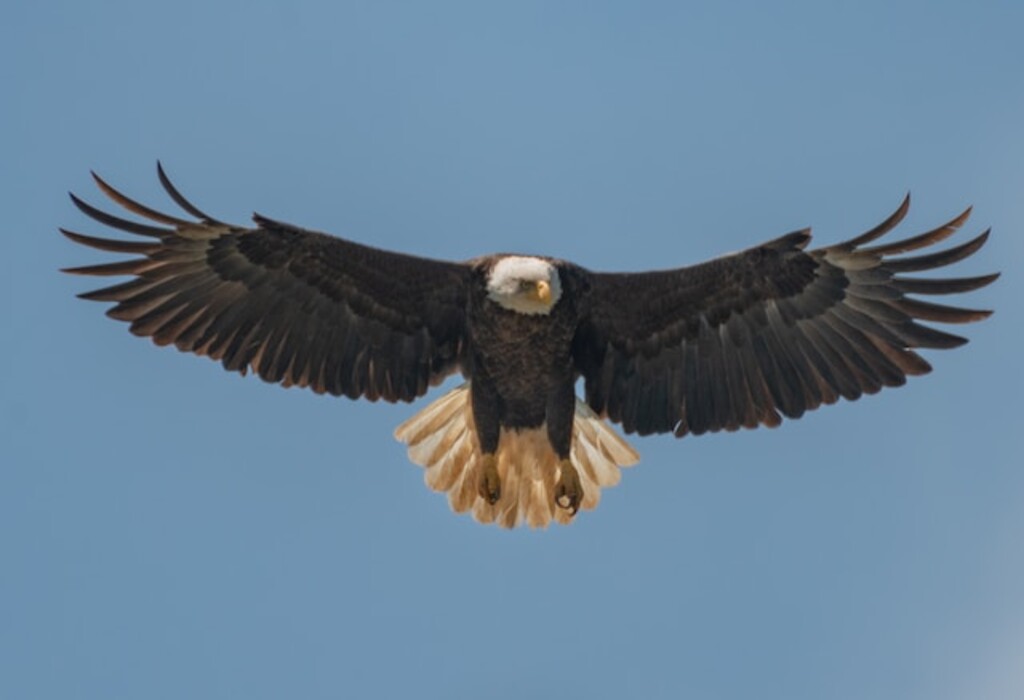
Lift Capacity of Eagles
Investigating the lifting prowess of eagles illuminates their astonishing ability to elevate objects of considerable weight.
Eagles possess a remarkable lift capacity, allowing them to carry prey that is several times their own body weight. This impressive feat is achieved through a combination of their powerful wings and strong talons.
The eagle’s wingspan, which can reach up to 7 feet, provides the necessary surface area to generate the lift required for carrying heavy objects.
Additionally, their sharp and curved talons enable them to firmly grasp and secure their prey during flight.
Eagles are known to prey on various animals, including fish, rabbits, and even small deer, showcasing their adaptability and strength.
Understanding the eagle’s lift capacity and prey selection is crucial in comprehending their ecological role and impact on ecosystems.
Transitioning into the subsequent section about ‘case studies: real-life examples of eagle predation’, these findings shed light on the fascinating dynamics of eagle predation.
Case Studies: Real-life Examples of Eagle Predation
Examining real-life examples of eagle predation provides valuable insights into the hunting strategies and ecological impact of these majestic birds of prey.
Eagle predation case studies reveal the remarkable hunting techniques employed by these birds.
For instance, eagles often use their exceptional eyesight to spot their prey from great distances, diving at high speeds to catch their target by surprise.
Additionally, they employ their sharp talons to grasp and immobilize their prey, ensuring a successful capture.
These case studies also shed light on the ecological impact of eagle predation.
Eagles play a crucial role in maintaining the balance of ecosystems by regulating the population of their prey species, preventing overpopulation and its associated detrimental effects.
Furthermore, their hunting strategies contribute to the overall health and vitality of ecosystems.
Transitioning into the subsequent section about environmental factors, it is important to consider how terrain and weather affect eagle hunting.
Environmental Factors: How Terrain and Weather Affect Eagle Hunting
Terrain and weather have a significant impact on the hunting capabilities of eagles, shaping their strategies and influencing their success in capturing prey.
Eagles are highly adaptable birds and their hunting techniques vary depending on the terrain they inhabit.
In mountainous regions, eagles take advantage of the rugged landscape by using their keen eyesight to spot prey from high vantage points.
They then swoop down, utilizing the steep slopes to gain speed and surprise their target.
On the other hand, in open plains or coastal areas, eagles rely more on their aerial agility to maneuver and chase their prey.
The weather also plays a crucial role in eagle hunting.
Wind patterns and air currents can affect their flight speed and maneuverability, while changes in temperature and humidity can impact the behavior of their prey.
By understanding how terrain and weather influence eagle hunting, we can gain insights into their hunting strategies and the challenges they face in capturing prey.
| Terrain | Impact |
|---|---|
| Mountainous regions | Provide high vantage points and steep slopes for surprise attacks |
| Open plains or coastal areas | Require more aerial agility and chasing techniques |
The table above highlights the different impacts of terrain on eagle hunting strategies. Next, we will explore how weather influences eagle predation and how eagles adapt to these environmental factors.

Goat Behavior and Defense Mechanisms
Goat behavior and defense mechanisms can be likened to a complex dance, where each movement and reaction serves as a step in their intricate choreography of survival.
Goats possess an array of defense mechanisms that help them evade predators, including eagles.
Firstly, goats are highly alert and possess excellent predator awareness. They have a keen sense of hearing and sight, allowing them to detect potential threats from afar.
Secondly, goats are agile climbers and are known to seek refuge in elevated areas, such as cliffs or rocky outcrops, where eagles find it difficult to reach.
Thirdly, goats have strong horns that they can use to defend themselves against predators.
Lastly, goats are social animals and often live in herds, which increases their chances of survival as predators are less likely to attack a large group.
Understanding these goat defense mechanisms provides insight into why eagle predation on goats is rare.
Transitioning into the subsequent section about unlikely scenarios, when an eagle might attempt to pick up a goat, it is important to analyze the factors that make such an event possible.
Unlikely Scenarios: When an Eagle Might Attempt to Pick Up a Goat
In unusual circumstances, the interaction between a majestic bird of prey and a nimble herbivore may occur.
Although it is uncommon for an eagle to attempt to pick up a goat, there are certain scenarios where this unlikely event could take place.
Eagle predation typically targets smaller prey such as rodents, birds, and fish, as these are easier to capture and carry.
However, if a goat is particularly vulnerable, such as a young or sick individual, an eagle might perceive it as an opportunity for a meal.
Goats are generally agile and possess strong defense mechanisms, such as their horns and ability to climb steep terrain.
Nonetheless, when a goat is compromised in terms of health or age, its defenses may be diminished, making it a potential target for an eagle.
Transitioning into the subsequent section about expert opinions, biologists and wildlife experts provide valuable insights into the rarity and dynamics of such interactions.
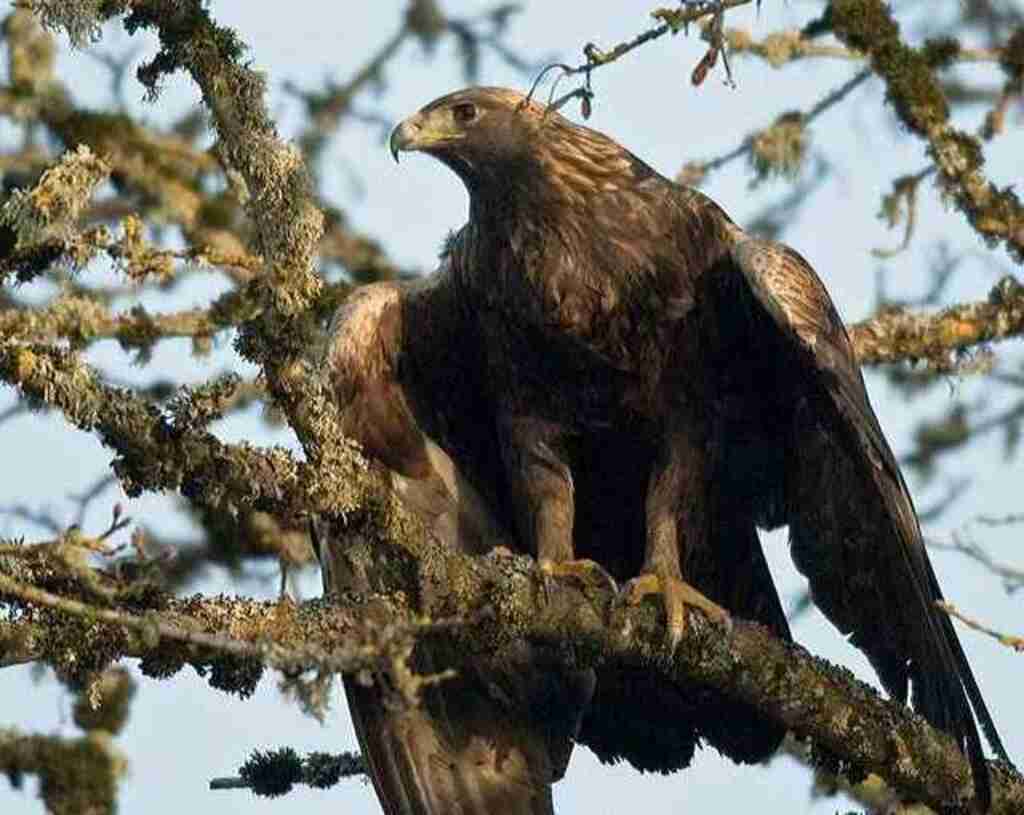
Expert Opinions: What Biologists and Wildlife Experts Say
In unlikely scenarios, where an eagle might attempt to pick up a goat, it is essential to rely on the expertise of biologists and wildlife experts to shed light on this possibility.
Understanding eagle hunting strategies and goat vulnerability is crucial in assessing the feasibility of such an event.
Biologists have extensively studied the hunting behaviors of eagles, which primarily target smaller prey such as fish and small mammals.
While eagles are powerful birds capable of carrying prey heavier than themselves, the idea of an eagle successfully lifting a full-grown goat seems highly improbable.
Goats are agile, sturdy animals, and their size and weight make them an unlikely target for an eagle.
Furthermore, eagles typically rely on surprise attacks and swoop down on their prey from above, which would be challenging to execute on a vigilant and potentially combative goat.
Therefore, based on scientific evidence and expert opinions, it is highly unlikely that an eagle could pick up a goat.
| Eagle Hunting Strategies | Goat Vulnerability |
|---|---|
| Surprise attacks | Vigilant |
| Swooping from above | Potentially combative |
| Targeting smaller prey | Agile, sturdy |
Moving forward to the subsequent section about the conclusion: can an eagle actually pick up a goat?
Conclusion: Can an Eagle Actually Pick Up a Goat?
Based on the evidence provided by biologists and wildlife experts, the feasibility of an eagle successfully lifting a full-grown goat appears to be highly improbable, given the agile and sturdy nature of goats and the hunting strategies of eagles.
Eagles are known to primarily prey on smaller animals, such as rabbits and fish, which are more easily manageable due to their size and weight.
Goats, on the other hand, are larger and possess a robust physique, making them less vulnerable to predation by eagles.
Furthermore, eagles typically rely on their speed, agility, and sharp talons to catch their prey, rather than attempting to lift them off the ground.
Therefore, the idea of an eagle picking up a goat seems highly unlikely based on the known hunting strategies and the physical characteristics of both the eagle and the goat.
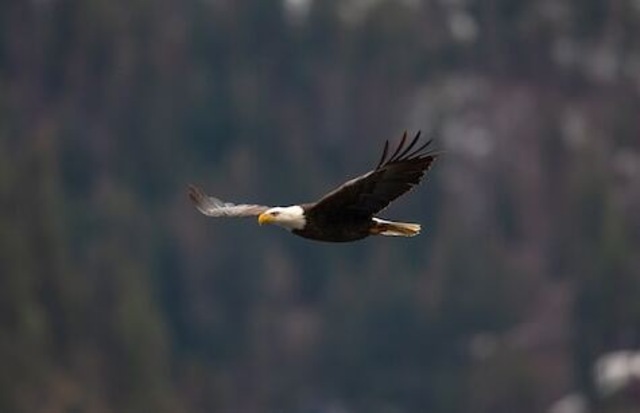
Frequently Asked Questions
How much weight can an eagle lift?
The maximum weight an eagle can lift, also known as its lifting capacity, is determined by various factors such as its size, strength, and flight capabilities. This scientific inquiry aims to explore the eagle’s ability to carry heavy loads.
Can an eagle pick up other animals besides goats?
The eagle’s hunting behavior and physical capabilities enable it to pick up and carry various animals besides goats. These capabilities include its powerful talons, strong wings, and sharp beak, allowing it to capture and transport prey efficiently.
Are there any recorded instances of eagles successfully picking up goats?
Recorded instances of eagle predation on goats are scarce, but there are documented cases of eagles successfully capturing and carrying other animals. These wildlife interactions highlight the predatory abilities of eagles and their impact on ecosystems.
Do eagles have any natural predators?
Eagles face predation threats from larger raptors like golden eagles, as well as from mammals such as bears and wolves. Their position in the food chain contributes to ecosystem balance by controlling populations of smaller animals.
What are the risks and potential consequences for an eagle attempting to pick up a goat?
Physical limitations and ecological impact are potential consequences for an eagle attempting to pick up a goat. Eagles have specific weight-bearing capabilities and attempting such an act may result in injury or death for both the eagle and the goat.

